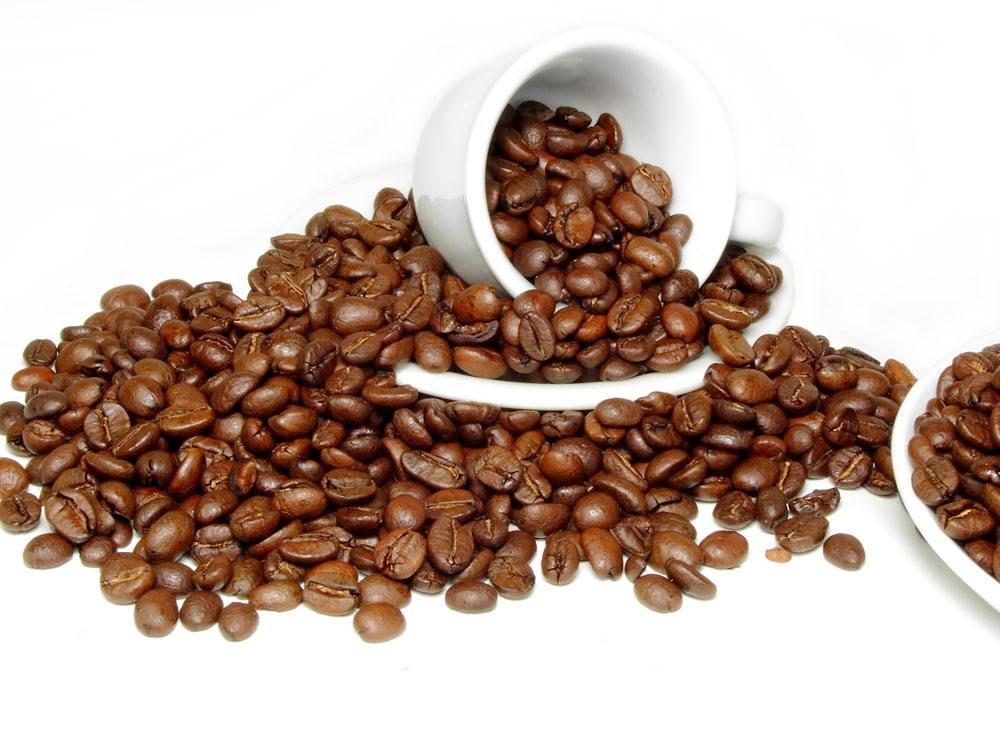Introduction of Guatemalan coffee, flavor characteristics of Guatemalan coffee
Follow the caf é (Wechat official account vdailycom) and found that Beautiful Cafe opened a small shop of its own.
[history of Origin]
Guatemala is located in the center of North and South America, and its geographical location occupies an important position in Central America. Guatemala covers an area of about 108899 square kilometers. The land features can be divided into plateau volcanoes, lowland tropical forests, volcanic sandy shore plains along the Pacific coast, and virgin lands along the Caribbean Sea. The SierraMadre Mountains of Central America, which straddles Guatemala from east to west, covers an area of about 2GP3 and has 34 volcanoes. In this country, rivers and lakes dot the landscape, while equatorial forests and plain jungles cover the land. There are also untapped volcanic beaches on the Pacific and Caribbean coasts.

The coffee produced in Guatemala is one of the top coffee in the world, because Guatemala is a high-altitude volcanic terrain, and these volcanoes are the ideal places to grow coffee. Compared with other varieties of coffee, critics prefer this mixed flavor coffee with spicy flavor. The extra hard coffee beans here are a rare good coffee with full grains, delicious taste and balanced acidity. In addition, its giant coffee beans have attracted a lot of attention in Guatemala.
Coffee was really introduced into Guatemala in 1750 by Father Jesuit, and the coffee industry was developed by German colonists at the end of the 19th century. Today, most of the coffee industry's production takes place in the south of the country. There are eight major coffee producing areas in Guatemala, each producing different coffee flavors, but to sum up, Guatemalan coffee shows a mild and mellow overall texture, elegant aroma, and special and pleasant acidity similar to fruit acid, becoming the aristocrat of coffee, among which Antigua Classic Coffee (AntiguaClassic) is highly recommended by global coffee connoisseurs.
Production area 1: Akat Nango Valley
Rising to 2000 meters (6500 feet), with dense shade and unique ecology, the nearby Fuego volcano erupts, making its coarse, sandy soil rich in a variety of minerals. Temperate sea breezes from the Pacific and a seasonal climate allow coffee in this region to be dried by sunlight and processed according to traditional family methods that have been accumulated over the years.
[characteristics] the acidity is obvious, the dry and wet fragrance is remarkable and pleasant, the alcohol thickness is good, and the aftertaste is clear and long.
Producing area 2: Koban of Rainforest
It is cloudy and rainy all the year round and the climate is cool. The vast majority of Koban coffee in the rainforest is grown in the obviously undulating and foggy mountains of the region and is deeply influenced by limestone and clay in the Atlantic basin. Koban has two seasons: the rainy season and the rainy season.
[characteristics] obvious fresh fruit flavor, balanced mellow thickness, pleasant aroma.
Production area 3: Antigua
Rich volcanic land, low humidity, plenty of sunshine and cool nights are the characteristics of this producing area. The valley is surrounded by three volcanoes: Agua, Fuego and Acatenango. Volcanic ash from the eruption makes the soil of Antigua rich in minerals. Volcanic pumice can maintain humidity and overcome the lack of rainfall in Antigua; dense tree shade protects against occasional frosts.
[features] it is rich in damp fragrance, good balance, high sweetness and elegant taste.
Producing area 4: micro Nanguo Highland
Of the three major non-volcanic coffee producing areas in Guatemala, the Mini Tenango Highlands has the driest climate and the highest elevation. The dry and hot wind from Mexico's Tehuantepec plateau protects the coffee from frost, and coffee can be grown up to 2000 meters. Because of its remote location, all coffee farmers have to process their own coffee. Fortunately, there are so many streams in the area that small processing plants can be set up almost anywhere.
[characteristics] High acidity, pleasant, high alcohol thickness and wine aftertaste.
Producing area five: the Waiqiangsi Plateau
The area is of volcanic soil, with high altitude, sufficient rainfall and great humidity variation. Ash from Pacaya, Guatemala's most active volcano, provides important minerals for the soil in the region. There is plenty of sunshine in the dry season, and although the morning clouds and dew are heavy, they dissipate quickly. As a result, 100% of the coffee in the area is processed in the full sun.
[characteristics] the acidity is bright and consistent, the aroma is sufficient, and the thickness of alcohol is delicate.
Production area six: new Oriental
Coffee in this area has been grown entirely by small farmers since the 1950s, and now every farmer in the mountains is a coffee production unit. This mountain area, once the most remote and poorest part of Guatemala, is now full of vitality. Rainy, cloudy, New Oriental ancient times is a volcanic area, soil volcanic metamorphic rock evolved, rich in minerals, balanced nutrition, different from other volcanic coffee producing areas.
[features] the palate is well-balanced, mellow and full-bodied, with chocolate flavor.
Producing area Seven: traditional Atitlan
Atitlan is one of the five largest volcanic coffee producing areas in Guatemala, and its soil organic matter is the most abundant among the five volcanic coffee producing areas. 90% of the traditional Atilan coffee is grown on the violent volcanic slopes of Lake Attila, where the daily breeze stirs the lake, which is an important factor affecting the microclimate of the region. The area has accumulated excellent planting and processing techniques for a long time.
[characteristics] the aroma is refreshing, the acidity is bright and the mellow thickness is full.
Producing area eight: San Marco volcano
San Marco has the hottest climate of the eight largest coffee producing regions in Guatemala, with a maximum rainfall of 200inches (5000 mm). The rainy season is earlier than in other areas, and coffee trees bloom earlier. Like other remote areas of Guatemala, volcanic San Marco coffee is grown and processed by small farmers. Due to frequent rainfall in the rainy season, most coffees are pre-dried in the sun and then dried in a Guardiola dryer.
[characteristics] there are subtle floral aromas in the aroma and taste, obvious acidity and good mellow thickness.
Important Notice :
前街咖啡 FrontStreet Coffee has moved to new addredd:
FrontStreet Coffee Address: 315,Donghua East Road,GuangZhou
Tel:020 38364473
- Prev

Guatemala Coffee Culture, introduction of Guatemalan Coffee
Following Caf é (official Wechat account vdailycom) found that the Beautiful Cafe opened a small shop of its own in Guatemala in 1750, Father Jesuit introduced coffee trees to Guatemala (Guatemala), where German colonists developed the coffee industry in the late 19th century. Today, most of the coffee industry's production takes place in the south of the country. Coffee producing areas in Guatemala
- Next

Kilimanjaro coffee introduction, Kilimanjaro coffee brewing method
Following Cafe (official Wechat account vdailycom) found that Beautiful Cafe opened a small shop of its own, Kilikmanjaro Coffee Coffee (Kilimanjaro), which is grown in Mount Mount Kilimanjaro, Africa's highest mountain in northeastern Tanzania. Its coffee is of good quality, rich aroma and outstanding sour taste, so it is suitable for the preparation of comprehensive coffee. Kilimanjaro coffee is tan
Related
- Detailed explanation of Jadeite planting Land in Panamanian Jadeite Manor introduction to the grading system of Jadeite competitive bidding, Red bid, Green bid and Rose Summer
- Story of Coffee planting in Brenka region of Costa Rica Stonehenge Manor anaerobic heavy honey treatment of flavor mouth
- What's on the barrel of Blue Mountain Coffee beans?
- Can American coffee also pull flowers? How to use hot American style to pull out a good-looking pattern?
- Can you make a cold extract with coffee beans? What is the right proportion for cold-extracted coffee formula?
- Indonesian PWN Gold Mandrine Coffee Origin Features Flavor How to Chong? Mandolin coffee is American.
- A brief introduction to the flavor characteristics of Brazilian yellow bourbon coffee beans
- What is the effect of different water quality on the flavor of cold-extracted coffee? What kind of water is best for brewing coffee?
- Why do you think of Rose Summer whenever you mention Panamanian coffee?
- Introduction to the characteristics of authentic blue mountain coffee bean producing areas? What is the CIB Coffee Authority in Jamaica?

